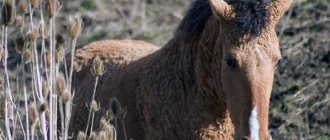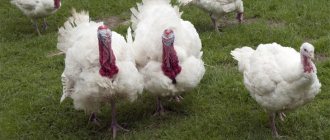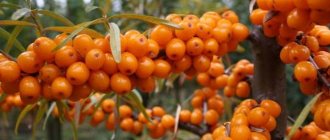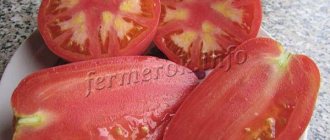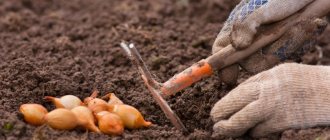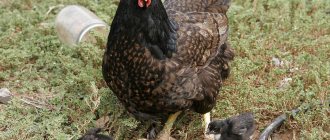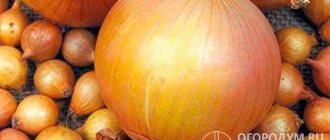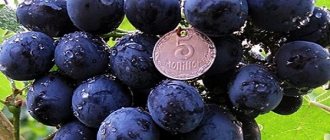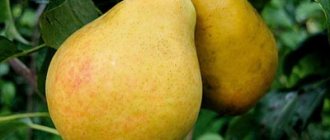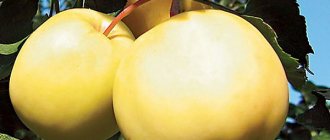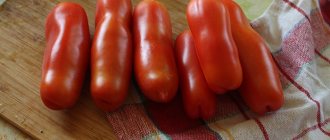Reasons for the decrease in quantitative indicators of milk productivity
It would be useful to get acquainted with the main reasons for the decrease in quantitative indicators of milk productivity.
So, milk loss and decreased milk productivity of cows is the result of:
- unsatisfactory condition of the structural elements of the milking system – 16%;
- use of milking equipment belonging to different systems, manufacturers – up to 4%;
- pain provoked by the pulsating teat rubber of the teat cup - 16%;
- very long preparation of the udder for milking – about 4%;
- underfeeding of a dry cow – 15-16;
- erroneous approach to preparing heifers for calving (unsuccessful diet, premature or late transfer to milking mode...) – 13-14%;
- lack of exercise – 7%;
- improperly equipped recreation area – 8%;
- high concentration of NH3 and CO2, relative humidity – 9-10%;
- untimely provision of feed – 6-7%;
- barrenness - about 5.5% monthly;
- mastitis – up to 30%;
- double milking of an animal transferred to the milking group – 11%.
If you do not massage and neglect the milking of the first portions of mammary gland secretion, daily losses will be 8 and 6%, respectively.
How did cows like this appear?
The main difference between small cows and other miniature domestic animals is the preservation of productivity. Dwarf breeds of these dairy animals produce up to 3 liters of milk per day (some more), and the meat obtained after slaughter has excellent taste. These animals have practically no fat, so the meat products of mini-cows are considered dietary and are in demand on the world market. However, currently only expensive restaurants can afford to include meat from such animals on the menu.
These breeds first appeared in India - it was there that local breeders began to breed these small animals. Since cows are sacred in this country, they are not raised for meat. And now the number of mini-cows there is growing rapidly.
It is in the Indian states that cows are the center of a normal Indian family. The main dishes of the diet there are prepared from milk and other products based on it. And Indian Vedic medicine, whose roots go back millennia, recommends using fresh excrement of these animals for medicinal purposes.
Therefore, in India there are many scientific institutions where cows are studied and new breeds are developed. And not so long ago, one of the agricultural institutes of this country began to breed a significantly new type of cattle - dwarf cows. Such animals look more aesthetically attractive, and in some religious rituals they have become simply irreplaceable. But solving economic problems with the help of mini-cows was one of the last places.
As a result, dwarf cows, which you wouldn’t dare call cattle, have a wonderful appearance, besides, they are very cute, have strong immunity, require little food and are favorites of children (primarily).
During the same period of time, Australian breeders began developing large Angus cows into miniature cattle. And their efforts were crowned with success - these cattle weighing about 500–550 kg decreased in size to mini-cows, which began to weigh no more than 340 kg.
Pros and cons of the breed
Advantages of small pigs:
- Their intelligence is higher than that of cats and dogs.
- Mini-pigs are endowed with sociability; they know how to find a common language not only with their owners and their children, but also with other pets.
- They are extremely affectionate and devoted to their owner.
- These animals have attractive appearance and small size, which is why they have earned popularity.
- The mini pig is easy to toilet train. Animals are trainable.
This breed has several negative qualities:
- Mini pigs often grow larger than expected. This happens because their natural characteristics are very blurred.
- No litter is suitable for mini pig litter. Because of this, the question of odor from stool arises.
- Mini pigs have a habit of making tunnels at home and opening up floor coverings.
- Owners of mini-pigs often describe them as too noisy and restless animals.
The level of cleanliness of mini pigs, according to experts, depends on how much effort and patience the owner puts into raising the pet. The upbringing scheme should be based on perseverance and severity, but in no case on violence. With affection and firmness, you can ensure that your Mini Pig becomes the best pet for you and your family.
Miniature cows at Happy Mountain Farm
This is the name of the agricultural laboratory and exemplary farm near Cavington (Washington State). Nearby is the picturesque Mount Rainer (Raincoat). This is where a person raises his pets, which means a lot in the world of mini-fauna lovers. This is the chairman of the International Miniature Cattle Breeders Society and Registry, retired professor Richard Gredwall.
The farm was built in 1966 and is a mecca for producers and connoisseurs of miniature livestock. Visitors to the farm are warned: “Be careful! Watch your step!”, meaning animals that “Gullivers” with cameras and video cameras may not notice. The local cows and bulls are no higher than your waist, but they moo just as loudly as their normal relatives.
Professor Gredwal has been breeding mini-cattle for over forty years. During this time, he bred 18 miniature breeds. He began breeding miniature cows for the most pragmatic reasons - there was less and less land for pastures. Professor Gredwal admits that it is quite difficult to breed new breeds.
You always need to keep in mind who is related to whom. You can't go wrong. Breeding and breeding miniature cows gives a good profit, especially when you are famous all over the world and personally sign herd books, but it’s always a little sad to sell your pets, and it’s completely unbearable to imagine that someone somewhere is putting your cow under the knife. The professor's wife is even more sentimental.
She sees the animals off, waving her hand after them. It is impossible to get used to the fact that this is just business and nothing personal. There is too much soul and humanity involved in breeding small animals.
How much milk does a mini cow give?
The most popular types of dwarf breeds:
| Photo | Name | Description | Milk per day | Height | Weight |
| Dwarf Zebu cow | Comes from Sri Lanka, where this species is considered sacred. The breed is distinguished by its endurance and unpretentiousness in food. | 3l. | 90cm. | 80kg. | |
| Mini cow Vechur | The smallest breed of cow in the world, which produces the most milk relative to its weight. Early life mortality rate is less than 1%. The milk of the Vechur breed is considered the healthiest cow's milk. It is prescribed to treat many diseases. | 4l. | 75cm. | 70kg. | |
| Yakut mini cow | Distributed in the Sakha Republic, it has common related roots with Zebu. Tolerates severe frosts well. Milk has a high fat content of 6-9%. | 5l. | 100cm. | 250kg | |
| Jersey breed | Dairy breed of mini cows. Bred on the English island of Jersey. The ratio of feed consumption per 1 liter of milk = 0.8 feed units! | 8l.-12l. | 120cm. | 350kg. | |
| Stuffed cow from Iowa | The most expensive and most beautiful breed of medium-sized cows. Country of origin USA, Iowa. The breed is bred solely for aesthetics and participation in farm shows or competitions. Its cost starts from $5,000 and can reach several tens of thousands of dollars. | — | 135cm. | 550kg. |
All breeds of mini cows have similar advantages over regular ones:
- milk and meat with high taste quality;
- acceptable appetite;
- have excellent immunity and are resistant to many diseases of ordinary cows;
- reproduce well;
- unpretentious in content;
- pliable, easily controlled and less aggressive.
More interesting fact! Do you know that Zebu hump is considered a delicacy that can only be ordered in elite restaurants.
Livestock → Mini cows - a new trend in livestock farming
I came across this beauty on the Internet! I can't help but share!
These are dwarf cows! They are very popular abroad, by the way. Especially in England and the USA. A tiny cow is ideal for those who want to eat natural products, but the amount of land does not allow them to acquire a “full-fledged herd.”
Even those who had no intention of farming at all were interested in the miniature cows. Hundreds of British families have already taken up raising mini-cows. Moreover, keeping these animals, unlike other pets, brings not only pleasure, but also quite tangible benefits. It is unlikely that anyone will refuse a jug of fresh milk or fresh cream every morning for breakfast!
In one of the typical provincial English families, the passion for mini-cows is explained very simply: “Due to rising food prices, these cows are a godsend. They will give us the ability to produce our own food. Small cows, although they have been around for a week since they were bred in 2000, are already known for the high quality of their meat. In addition, they are, as they say, easy to handle - they are easy to care for, and they reproduce easily. As long as you have a large amount of grass, they will be happy with everything, they don’t need to be fed anything extra.”
In the USA, despite the fact that pastures allow you to keep large cattle, the popularity of dwarf cows is also high. After all, more does not mean better, especially when it comes to animals. Americans happily raise and breed baby cows on their ranches. And these pets, unlike guinea pigs or decorative rabbits, not only please the eye, but also provide milk, kefir, yogurt, cottage cheese, and if you try, even cheese and butter. And also, as the particularly enterprising owners of this miracle say, you can eat such a cow if you get tired of keeping it =).
In general, there are 26 breeds of dwarf cows. They were first bred in India in the genetics laboratory of the Kerala Agricultural University. Experts presented a tiny cow, no more than 90 centimeters tall, weighing from 90 to 150 kilograms, which at the same time produces excellent milk, has a strong immune system and, among other things, eats little.
But what about Russia? In our homeland there are not many such cows yet - a little more than a thousand. The red Gorbatov breed is widespread. This breed is not fussy about feeding and is capable of maintaining fatness for a long period even with a decrease in diet. And besides, it is perfect for breeding. The “red humpback” mini-cows have milk of excellent quality, it has a high protein content, and the fat content reaches 4.3%. In addition, the red Gorbatov breed is less susceptible to diseases, for example, leukemia.
Is it surprising that with all these advantages, mini-cows are so rare in Russia? Or am I not right? You should buy some cows like this, wouldn't you?
Appearance and temperament
These cute decorative cows resemble a large plush toy. Large heifers weigh up to six hundred, bulls up to eight hundred kilograms. The small head on the wide neck does not have a horn. The entire body of a shaggy cow is covered with thick, soft, silky, plush-like hair. The udder is not developed. The tail is long with a shaggy tassel at the end. Fluffy fur not only on the body, but also on the legs, which gives the calf an even more peaceful, fairy-tale shape. By the way, in nature there were individuals with long hair, but their legs were not covered with hair. Overall the calf looks large and stable. Calves come in the following colors :
We also recommend reading:
The largest bulls with officially recorded parameters Cows are capable of being friends Genetics have bred hornless dairy bulls Serenade for a cow
- light brown;
- red-brown;
- black;
- light brown with white spots;
- black and white.
In the following years, calves with the names "Johnny Football", "Monopoly" and "Heat Wave" were presented at shows.
The breed was bred as
an ornamental and is not suitable for milk or meat production. Calves usually participate in exhibitions, since an adult of this breed is not so attractive. Breeders are still working on the topic of preserving the plush appearance of adults. Officially, the plush species is not recognized as a breed, but is considered a crossbreed. This does not prevent the great demand for this animal. The army of people who want to have such a miracle on their farm is growing every year. But you can only buy it in the USA, and it’s not cheap. Only a very wealthy person can afford to buy such a handsome man. The cost of a calf starts from five thousand dollars and can increase tenfold.
Care and feeding
Animals can be grazed in any area; cows are able to stay outside the barn in warm weather from early morning until late evening. Cattle eat any kind of grass. As for additional complementary feeding, it includes hay, silage, vegetables and mixed feed, water, especially in winter. The amount of feed is calculated from the amount of milk, so per 1 liter there is usually about 300 grams of supplementary feed.
Farmers can determine that animals are receiving proper nutrition by looking at the consistency of their excrement - the presence of a large amount of grassy fibers will indicate the need to reduce the amount of succulent feed consumed. As for loose stools, it is evidence of the introduction of an excess amount of concentrates.
Caring for Jersey dairy cows involves monitoring the health of the udder: the farmer needs to inspect it before each milking. After its completion, the udder must be treated with a disinfectant - it is best to use formulations with iodine or lactic acid.
Milking involves preliminary massage and rubbing of the udder with a bunch of soft grass to improve the flow of milk to the nipples. The first milk should be expressed completely
Since the breed has a very strongly developed maternal instinct, there are cases when a cow does not give milk until she feeds the calf - this should also be taken into account
Prevention of the problem
Blood discharge may be a physiological feature of the cow, therefore no additional measures other than compliance with sanitary and hygienic measures will be required. Only a completely healthy animal can be allowed to mate.
A lack of vitamin D in the body, especially during pregnancy, will lead to excessive bleeding. Vitamin D is responsible for the absorption of calcium and phosphorus from food, so food must contain all the necessary vitamins and microelements.
Bleeding during pregnancy will lead to the loss of not only the unborn calf, but also the cow itself. After insemination and during pregnancy, you need to be careful, monitor the health of the animal, and if bleeding occurs, immediately seek help from a veterinarian.
Benefit or love?
Farmers and breeders decided to take advantage of what science had to offer them and began breeding genetically modified mini-cows in order to make a profit from the sale of each. Milk lovers liked this idea, and now many backyards of the same England are grazed by ornamental cows that produce milk.
It is worth noting that miniature cows are not full-fledged animals, and therefore they can have all sorts of health problems, which can be overcome with high-quality veterinary medications. And since a cow only produces milk after she gives birth to a calf, you can expect difficulties during childbirth for a mini-cow. The animal may die along with the offspring. The breeder will never report this, but breeders and farmers are well aware of this.
The right thing to do is people who keep these cute animals in their homes or on their property as decorative animals, walking them in the evenings like dogs. But it is worth considering that miniature cows are not easy to train. Dwarf cows are good-natured, easily make contact with people and are very inquisitive, but are not ready to follow commands. They can frolic just like dogs, running across the green lawn and enjoying the sun and grass. But they will not always run to the owner if he calls them.
Pavlovsk livestock specialists preserve a unique breed of cows
Krasnogorbatov cows were bred 2 centuries ago in the Nizhny Novgorod region, but now there are only 1,500 thousand left in Russia. Meanwhile, this is a very profitable and unpretentious breed; it is popular in the West.
Krasnogorbatovsk cows are half the size of cows of other breeds, weighing only 350 kilograms.
But they require increased attention. The breed should be preserved for posterity, livestock experts say.
In Russia there are only one and a half thousand of them, half of them live in Pavlovsk cowsheds. Krasnogorbatovskys came from the Tyrolean breed,
which was brought to the Nizhny Novgorod province in the 19th century. Foreign women were crossed with local ones from the Oka region. From the former, the Krasnogorbatovskayas inherited the highest quality milk, from the latter - excellent health: these cows do not get sick.
The telephones in the household were hot. They are calling from Semenov, Lyskov, there is an application from Chuvashia. The Federation has been supporting this breed for 7 years now. It allocates 3 thousand per month for one cow.
Now the farm is collecting the best cows for the road - they decided to show them to Russian agricultural producers at the Nizhny Novgorod Fair. A hairdresser has already been assigned to Pavlovsk cows.
Material from State Television and Radio Broadcasting Company "Nizhny Novgorod".
Tiny cowWe will tell you about a tiny animal that can be considered as a four-legged companion and kept at home. This different variety of dwarf cows has about 26 breeds
They are considered to be descendants of Zebu cattle from southern India. In the 1920s, several of these animals were brought to the United States and sent to zoos. Years later, ranchers began to take notice of the miniature cows and began breeding them commercially in an attempt to attract rodeo fans. And the next step of the breeders was to advertise tiny cows as pets
As the rancheros assure, small cows are very reminiscent of dogs in their behavior, except they don’t jump into people’s hands. Their size is also similar to that of a large dog. Their height is about 80-90 cm, and their weight ranges from 90 to 150 kg. Perhaps American farmers will achieve great success in breeding and breed mini-cows even smaller than modern miniature representatives. These animals come in exactly the same colors as ordinary cows, but the beauty of the long-drawn mooing babies is that they are incredibly attractive! As already mentioned, connoisseurs of these animals compare cute charmers with dogs: cows also love communication with humans, love to make themselves beautiful, or rather, they like to be cleaned and washed, they quickly remember their name and run to their beloved owner at the first call. To these positive qualities we can add that miniature cows simply adore people, and oddly enough, the happy owners of this exotic reciprocate their feelings for their pets. You can take a miniature cow for a walk, like a dog, play with it, stroke it, hug it. Miracles! But on the other hand, how can one not be imbued with warm feelings if such charm comes up to the owner, puts his head on his knees and looks devotedly, with adoration with his big brown eyes? Farmers who raise miniature cows are proud to say that more and more people (usually women) want to have these animals at home. Some people have not one, but several cows and even try to train them. One owner taught a cow to lie down on command, while another one jumped over her friend. Why not a circus act? Yes, it turns out that mini-cows are much smarter than people assume and are cheap to maintain. Winter costs are about $30 per month (for hay), but in the summer your green lawn will be trimmed evenly, so there is no need to mow the grass. But don’t expect that the mini-cow will sleep curled up at your feet; after all, it is a fairly large animal, although it does not take up much space in the room. But it can produce milk, about 3 liters per day, fully meeting the needs of a small families. Therefore, if you suddenly fail to establish a good relationship with your pet, practical application during the economic crisis can always be found!
Sofia Mitroshina
Yakut breed of cows It is small, shaggy in winter, gives quite a lot of milk, with a high content of fat and protein, it has the so-called marbled meat. Can live in the open air, in frosts down to - 50 C.
Cuban dwarf cows produce 6-7 liters of milk per day.
How did cows like this appear?
The main difference between small cows and other miniature domestic animals is the preservation of productivity. Dwarf breeds of these dairy animals produce up to 3 liters of milk per day (some more), and the meat obtained after slaughter has excellent taste. These animals have practically no fat, so the meat products of mini-cows are considered dietary and are in demand on the world market. However, currently only expensive restaurants can afford to include meat from such animals on the menu.
Mini cow evening
These breeds first appeared in India - it was there that local breeders began to breed these small animals. Since cows are sacred in this country, they are not raised for meat. And now the number of mini-cows there is growing rapidly.
It is in the Indian states that cows are the center of a normal Indian family. The main dishes of the diet there are prepared from milk and other products based on it. And Indian Vedic medicine, whose roots go back millennia, recommends using fresh excrement of these animals for medicinal purposes.
Therefore, in India there are many scientific institutions where cows are studied and new breeds are developed. And not so long ago, one of the agricultural institutes of this country began to breed a significantly new type of cattle - dwarf cows. Such animals look more aesthetically attractive, and in some religious rituals they have become simply irreplaceable. But solving economic problems with the help of mini-cows was one of the last places.
As a result, dwarf cows, which you wouldn’t dare call cattle, have a wonderful appearance, besides, they are very cute, have strong immunity, require little food and are favorites of children (primarily).
Owners with their miniature cows
During the same period of time, Australian breeders began developing large Angus cows into miniature cattle. And their efforts were crowned with success - these cattle weighing about 500–550 kg decreased in size to mini-cows, which began to weigh no more than 340 kg.
general characteristics
The first time people started talking about miniature cows was at the beginning of the last century. They were bred by Indian breeders, and Australian livestock breeders were also engaged in production almost simultaneously. Mini-cows produce about 3 liters of milk per day, the meat is of fairly high quality, which has great nutritional value. Dwarf breeds have low mortality rates among young animals.
Mature individuals also rarely get sick, since they have inherent resistance from birth to common diseases in livestock and strong immunity to viral diseases.
Such features significantly increase the viability of livestock. Thanks to these characteristics, dwarf breeds have endeared themselves to farmers in many countries. Their main advantages include:
- high taste qualities of meat and dairy products;
- moderate need for food;
- strong immunity and immunity to cattle diseases;
- fertility;
- low maintenance requirements;
- pliability, lack of aggression;
- small sizes.
Growing
To grow, the calf must be suckled for the first time so that the animal receives the required amount of milk, strengthens and grows. During the first 7–10 days, the norm for him will be 3 liters of milk per feeding, provided that he has three meals a day. In between, the farmer can supplement the Jersey with salted water.
Fattening can begin when the calf reaches one month. For these purposes, it is recommended to use beets and potatoes, gradually introducing mixed feed into the cow’s diet. When he turns two months old, milk for feeding begins to be diluted with water, and hay is introduced into the diet. It is also recommended to use red clay for Jersey babies, especially if they are not gaining weight well. Subsequently, the growing calf is grazed on pasture, however, the farmer should monitor the well-coordinated functioning of the animal’s digestive tract, using no more than three liters of water per day for drinking.
You can learn more about some of the features of Jersey cows from the following video.
Factors influencing milk productivity of cows
First of all, farmers who decide to organize such a farm must, of course, have an idea of how much milk a cow produces per day. Cattle productivity in this regard is determined by many factors:
- weight and age of the animal;
- his breed;
- individual characteristics;
- compliance with milking rules;
- time of year.
What else does a cow’s milk yield depend on? Of course, the productivity of animals is directly influenced by how properly they are cared for. Of course, cattle should be kept in good conditions and fed properly.
The average milk yield of dairy cows on Russian farms is approximately 10-20 liters per day. According to statistics, in 2014, for example, on domestic farms this figure was 13.7 liters. On small peasant farmsteads, cattle are usually more productive. It is believed that after the fifth calving, a private cow should produce at least 17 liters of milk per day. Otherwise, it will simply be unprofitable to maintain it.
The milk productivity of cattle is highly dependent on many hereditary and non-hereditary factors.
Housing and feeding are the most important factors that influence milk production, since breed and hereditary characteristics can be fully realized only with plentiful, high-quality and balanced nutrition and comfortable living conditions
Particular attention should be paid to nutrition during the dry period and milking period. Age of the animal. Young cows, as a rule, produce less milk than cows that have finished growing
The growth period of cattle is 5 years, so milk yield should increase in the sixth year of life. In the ninth year of life, milk yields begin to gradually decline.
Young cows
Live mass. Each color has an optimal body weight, which allows the full breed and hereditary potential to be realized. An increase in live body weight always has a beneficial effect on milk production. Age of first insemination. The optimal age is 16-18 months, but the important question is whether the heifer is ready for this. The minimum weight of a cow should be 340 kg (but it all depends on the breed). The first calving occurs no later than 27 months. Fertilization of cows that are lagging behind in development leads to their greater lag and reduction in milk yield; there is a high probability that weak and sick cubs will be born. Duration of the service period. The service period is the time interval between calving and the next fertilization. The optimal period is 60-80 days. If you miss several hunts, it is possible that bark will form. Season of the year and calving. If quality nutrition is provided throughout the year, the effect of the calving season on milk production is extremely small. If the food supply is not very good, then the level of feeding in different seasons is uneven. The most suitable time for calving is spring.
Peculiarities
All mini dog breeds are characterized by low weight and height. They are very affectionate and trusting in their relationships with people around them. However, these animals are suspicious of strangers. They attack strangers loudly, begin to growl, thereby expressing their own dissatisfaction, and can even bite.
These cuties are also very smart and very trainable. Almost all small breeds have hunting roots, for this reason they need constant physical activity. Small pets live about five years longer than representatives of medium and large breeds.
Gorgeous mini dogs have poor health. In particular, the most vulnerable are the nervous system and the organs of the digestive system. You shouldn’t constantly yell at kids or hurt them, otherwise they may even have a heart attack. Nutrition must be correct and clearly balanced. Such pets should not be given sausage, raw meat and a number of other products, as this causes significant harm to their health.
Breeds of smooth-haired mini dogs do not require combing or haircuts. The coat of some pets, such as lapdogs and poodles, requires constant grooming to prevent tangles from forming. For hygiene, only special products should be used. You will learn more about the features of keeping and caring for representatives of this group in this section by choosing the breed you like.
It is not uncommon for the owners of such animals to dress them in different outfits. The cost of such things is quite high, however, there is no need to save on it. Such dogs need clothing, especially during frosts, because they get cold and can easily catch a cold.
Babies do not need regular walks. They can go to the toilet for a diaper. This greatly simplifies the life of the owner, especially when bad weather prevents walks. In this section you will learn everything that miniature dogs need, how to care for, maintain and educate them.
Strategies for implementing a business idea
There are two strategies for achieving profit:
- Immediately sell the born mini-cows (a priority option in the first year of doing business).
- Keep born females to increase the population capable of bearing offspring in the future.
In any case, the income portion will only grow from year to year, and the business will develop and strengthen. And livestock specialists in unison declare that the passion for mini-cows among our population is not a short-term fashion, but a long-term perspective. So why not ride this wave while regularly making a profit!
Of course, you will need to build a mini barn and acquire a mini milking machine. These breeds are very attractive both for mini-farms and for personal keeping.
Cows are attractive to modern rural populations
But they are not only extremely exotic in nature, but also very friendly. This dwarf pet will undoubtedly become your good friend, with whom it will be interesting to spend your free time. Dwarf cows can be trained, they are very smart, recognize their owners well, and have a fairly flexible and kind character. And most importantly, they are very economical to maintain. The combination of these characteristics makes mini-cows virtually the ideal pet!
Modern agriculture is focused on production efficiency relative to labor and financial costs. After all, every year an ordinary cow requires more and more effort and money to maintain it. And the company buys milk at 2 times cheaper than what it sells in stores. It is cheaper and more rational for an ordinary villager to keep a small cow for himself, which will provide his family with milk without hassle.
Is it possible to buy for an apartment?
Although Cameroonian dwarf goats are intelligent and trainable, keeping them in an apartment is quite problematic. You can toilet train a goat, but it will still present “surprises” as it goes. By nature, animals love to climb. The wardrobe and refrigerator are not a hindrance to them. They will also chew everything that comes their way: tablecloth, curtains, bedspread.
This is a herd animal, so it can easily get along with other pets.
If, after all, the goat lives in an apartment, you need to take care of “slippers” so that the clatter of hooves is not heard. You also need to set up your own corner for the goat and train it to use the toilet. It is better to use straw bedding.
According to reviews from owners of dwarf goats, they have no equal in the usefulness of milk and meat. Cameroon pygmy goats do not smell. If kept comfortably, they can live for more than 19 years. The lambing of these animals outnumbers other livestock. With a minimal budget spent, you can achieve a huge increase in your herd.
Many modern breeders recommend Cameroonian dwarf goats for breeding. They will bring aesthetic pleasure and delight gourmets.
Watch the video about keeping dwarf goats at home.
Best breeds
Breeders first bred these animals about 15 years ago. Because of this, today there are about 26–30 breeds of small cows. However, the best among them are the varieties that will be discussed further.
The Highland cow breed has the highest productivity in meat production. They have long horns. Also, the animals are abundantly covered with shaggy wool. Like all types of miniature cows, this breed is almost not susceptible to disease. Despite their calm disposition, they are able to fend for themselves in front of predators. Horns serve as good protection for them.
Among farmers, this breed is valued for its meat, which has excellent dietary qualities.
Another mini-breed is the Vechur. This is the smallest ornamental cow in the world. At the same time, it is characterized by low productivity. Cows of this variety grow up to 1 m. Representatives of this breed weigh about 100 kg. They feed on small amounts of food. You can get up to 3 liters of milk per day from one cow.
In the past, this species was on the verge of extinction. This was due to the fact that due to the fact that it started in India in the 60s. of the last century, programs to increase milk yield crossed them without preserving their pure subspecies.
Yakut miniature
The most interesting type of dwarf breeds is the Yakut miniature. Representatives of this species are characterized by the following parameters:
- small body dimensions;
- massive body. Females weigh about 350 kg, and males - 550 kg;
- stocky and short limbs;
- deep chest;
- dense, thick and long coat.
The daily milk yield here is only 1.5 liters. But the milk of Yakut cows has a high fat content. This parameter is in the range of 4.5–11%. In addition to fat, it contains a lot of protein, microelements and vitamins.
Sometimes Yakut miniature cows are raised for the purpose of obtaining a meat product. It is worth noting that representatives of this breed are the only ones who have marbled meat.
Miniature cow breeds also include the Zebu variety. In the wild, these animals are found on the island of Sri Lanka. But they are also grown in other regions.
Previously, Zebu was considered an almost extinct species, as breeders, due to the desire to obtain high milk yields, crossed them with representatives of other breeds. Today Zebu are already bred as a separate species, which allows maintaining species purity.
Outwardly, such cows resemble small calves. Their maximum weight does not exceed 91 cm. Typically, such animals weigh about 80 kg. At the same time, they have a strong physique. Although the limbs are not distinguished by developed muscles and look quite thin.
Like representatives of other varieties, Zebu are covered with long hair. Thanks to it, their skin is well protected from insects that live in hot climates.
These are the best dwarf breeds of domestic cows, which are most often raised in households.
Breeding dwarf cows
Interest in breeding dwarf cow breeds is gaining popularity, although they were developed about 100 years ago. Dwarf cows appeared in India, where they are considered sacred animals. Despite their miniature size, they bring no less benefits than ordinary animals. Dwarf cows can produce up to 3 liters of healthy milk per day. The size of the animal makes them easier to care for and maintain. Feed costs are also significantly reduced. The most common breeds:
- Zebu. The height of a cow does not exceed 90 cm at the withers. Maintenance costs three times less, but they do not tolerate frost well, and the temperature in the pen should not fall below zero.
- Highland. The Scottish Highland cow is the most productive among the dwarf beef breeds. The breed is valued for its high quality dietary meat.
- Evening The cow's height is less than 90 cm, and its weight does not exceed 100 kg. At the same time, she is capable of producing up to 3 liters of milk per day.
Productivity of breeds
| Key Productivity Features | Description |
| Number of dwarf breeds | About 30 varieties |
| Maximum weight | 105–110 kg |
| Maximum daily milk yield | 2.5–3 l |
Although the milk yield from such cows is small, their milk is considered unusually healing. The fact is that it contains an extremely high content of phospholipid substances - these are esters of polyhydric alcohols, which are carriers of phosphoric acid. This acid is very useful for brain function and restoration of the nervous system. Therefore, such milk is included in the healthy diet in India.
Angus dwarf cow with calf
The milk of miniature cows has a pleasant taste, as well as a specific chemical composition, for which it is valued in India and China.
When breeding, one of the goals of breeders was to develop a strong immune system in these individuals, so dwarf cows practically do not get sick, and they tolerate colds very easily.
The meat of mini-cows has excellent taste. True connoisseurs of lean beef claim that the meat of dwarf animals that eat exclusively grass and grains from the field is the most delicious, so they prefer it.
The price of such beef is almost one and a half times higher than regular beef. And the carcass of one miniature bull can easily fit into one freezer, so you can save on storing it while you are looking for buyers.
And some housewives even manage to sell excess milk from such cows.
Aberdeen Angus cattle breed
The cow breed was developed in Scotland. We carried out breeding work with local cattle in two counties: Forfarshire and Bakan (Aberdeen). Two breeds were crossed: Cormorant-Hamlis and Angus-Doddice. Selectors set the task of improving the meat characteristics of livestock. The work took almost 80 years. The stud book was established in 1879.
The color of the animals is black. The livestock is polled. The animals are strong, with a muscular build. The height of a bull at the withers is 150 cm, that of a cow is 135 cm. The head is massive, the neck is short and wide. There is a hump on the neck. The back is straight, the sides are barrel-shaped. The exterior of the Aberdeen Angus is characterized by all the signs of meat productivity. Limbs are strong. Animals are hardy. They can go without water for a long time and travel long distances in search of good pastures.
- The calf is born weighing 40-45 kg. Calving takes place without complications. Calves grow quickly. At the end of the milking period, at 8 months, bulls weigh 200 kg.
- The weight of an adult bull is 1 ton, that of a cow is 800 kg. Bull calves are brought to slaughter at 14-16 months. At this time, their weight reaches 800 kg.
- Chicks gain weight quickly. The first insemination is carried out at 14 months. The lifespan of cows is up to 16-18 calvings.
- Meat productivity 70%. The cows' milk yield is low - 1200 kg per lactation. Fat content 4%.
- Aberdeen Angus dogs can easily tolerate both heat and cold weather. They thrive both in the warm steppes of Australia and in the harsher forests of Scotland.
Aberdeen Anguss are often used to improve the meat productivity of other animals and to breed new breeds of cattle. This is how the Brangus, the Jamaican black cow, and the Barzon appeared. The meat of Scottish bulls has a marbled pattern. It is juicy and non-greasy. It differs in taste.
Aberdeen Angus breed of beef cows
Advantages of miniature cows
A huge advantage of these individuals is that they eat significantly less feed, and they require much less space in the barn. For food for one such cow, about 12,000 rubles will be required per year (which is several times less than for the maintenance of ordinary cows). For the winter, it is enough for them to prepare hay, and they do not need feed at all. In the summer, they get by just fine with green grass in the pasture.
However, these individuals need some special care:
- they should be brushed regularly;
- It is necessary to clean the hooves of stuck dirt, stones and other debris.
These individuals are very friendly and peaceful.
Cows of the dwarf breed are less susceptible to diseases than their larger relatives, they are much easier and simpler to care for, so mini-cows are in increasing demand, and their population is growing quite quickly around the world.
On small farms, children can be trusted to care for these cows, it’s so simple. In addition, these miniature animals have a beautiful decorative appearance, for which many farmers purchase them.
It is noteworthy that dwarf farm animals were bred almost a hundred years ago, and interest in them on an industrial scale has only now arisen. Baby cows, in accordance with established standards, by the age of three should not grow at the withers more than one hundred and five centimeters.
Miniature breeds of cows were bred in India, their numbers are growing, despite the fact that Hindus themselves consider cows to be sacred animals and do not eat beef (in some states this point is even enshrined in law).
Despite the fact that cows are small, it is difficult to overestimate the benefits of them, because the milk of dwarf cows is no less tasty than that from their large relatives. And maintaining a herd of little ones is incomparably easier. Cows of dwarf breeds, unlike other farm animals, maintain productivity, they are less susceptible to cattle diseases (you wouldn’t dare call them cattle), and are less demanding in care, so dwarf livestock breeding is becoming increasingly in demand.
Although the cost of maintaining dwarf cows is low (feed costs do not exceed an average of 1,000 rubles per month), they require special care - they need to be periodically brushed and their hooves cleaned. But if all conditions are met, the little cow will delight its owners with its friendly disposition.
The dwarf cow is not only a fashionable trend in animal husbandry. In addition to the fact that these cows provide very healthy milk (and on average, dwarf cows can produce up to 3 liters of milk per day), with their help, on a family farm, they can teach children to work, since dwarf cows require less labor to maintain compared to their big brothers. In addition, do not forget about the decorative component.
Britain and miniature animals
And over time, these dwarf cows appeared in good old England. Although it was from this island state that the world-famous breeds of cattle came out (Jersey, Ayrshire, Dexter and many others), but more and more often in the pastures you can see dwarf cows, peacefully chewing green grass next to their taller brothers. The fashion for mini-cattle has reached aristocratic estates. The land in this densely populated kingdom is becoming less and less, so the animals have to be kept not as large as before.
Mini zebu cows
But the local population, just like in other countries, appreciated the positive qualities of dwarf cows, which is why here, too, the number of various breeds of miniature cattle is steadily growing. It is grown not only for economic benefits, but also for entertainment.
